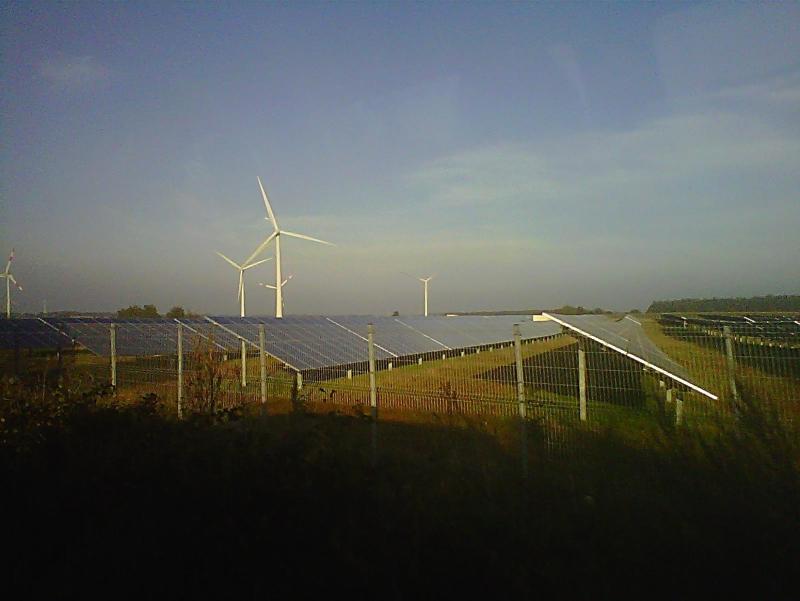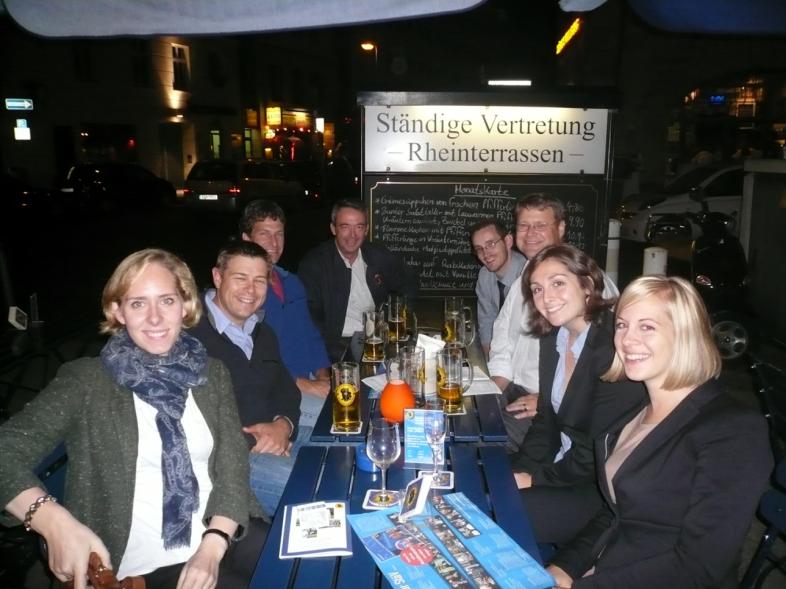In the effort to transition the United States to a clean energy economy, comparisons are frequently made with Germany – a nation that is successfully shifting away from fossil fuels and nuclear power while creating a thriving renewable energy industry and maintaining a strong economy. So when invited this past fall to participate in a clean energy/green jobs tour of Germany, I jumped at the opportunity to learn first-hand about the Deutschland experience.
This is the first in a series of three blogs that I will be posting—with some guest commentary from my colleague Steve Clemmer—discussing the highlights of our visit, and the key insights we have taken home with us.
 The tour was sponsored and organized by the Heinrich Böll Foundation (HBF), a think tank organization associated with Germany’s Green Party, in conjunction with the U.S.-based Blue-Green Alliance (BGA), a national partnership between labor unions and environmental organizations (including the Union of Concerned Scientists) focused on creating clean energy jobs.
The tour was sponsored and organized by the Heinrich Böll Foundation (HBF), a think tank organization associated with Germany’s Green Party, in conjunction with the U.S.-based Blue-Green Alliance (BGA), a national partnership between labor unions and environmental organizations (including the Union of Concerned Scientists) focused on creating clean energy jobs.
Our delegation included me, UCS Energy Research Director Steve Clemmer, half a dozen other BGA members representing various U.S. trade unions, and three HBF staff members as our guides. The purpose of our trip was two-fold: to expose our delegation to Germany’s clean energy transition and to introduce German stakeholders to the benefits of a blue-green partnership.
A Global Leader in Renewable Energy
We began our visit in Berlin, where we met with advocates, experts, and decision makers to talk about German’s clean energy transition. Germany supplied 17 percent of its power with renewable energy resources in 2010 and has established itself as a global leader in wind and solar technology and deployment. Jobs in Germany’s renewable energy industry have more than tripled over the past decade to 367,400 in 2010 and are projected to grow to 500,000 by 2020. Renewable energy provides significantly more jobs than the fossil fuel and nuclear power industries, whose jobs have been steadily declining.
Much of Germany’s success in developing renewable energy over the last two decades can be attributed to its feed-in tariff law. First enacted in 1991 and adjusted several times since, the feed-in tariff gives renewable energy projects priority access to the power grid, and provides a guaranteed price for the power for up to 20 years. It’s a policy that has been emulated in dozens of countries, though it is not currently as prevalent in the United States (a blog topic for another day!).
Figure 1: Renewable Energy Generation in Germany, 1990 – 2010
(Source: BMU / Christoph Edelhoff)
Germany’s Energy Concept
While the historical context was useful, what I found particularly interesting was hearing from our counterparts about Germany’s future energy plans, referred to as the “Energy Concept”. Introduced in 2010, the energy concept seeks to make Germany one of the most efficient and climate-friendly economies in the world with a high level of prosperity and competitive energy prices. This is not just lofty, aspirational rhetoric either. It is based on the near consensus (or about as close to consensus as you can get in national political discourse) recognition that the country’s current energy supply is not sustainable, and it is backed up by binding legislation.
In September 2010, the German Parliament adopted long-term targets for renewable energy deployment (18 percent of total energy by 2030, 60 percent by 2050), energy efficiency (20 percent cut in primary energy by 2020, 50 percent by 2050), and global warming emissions (40 percent below 1990 levels by 2020, 80-95 percent by 1990 levels by 2050).
Political Will is More Important than Choice of Policy
Achieving these aggressive goals will take a concerted and well-coordinated effort. The Federal Ministry of the Environment has already identified more than 100 measures within 10 separate categories as part of a comprehensive approach to implementation. No doubt, there will be significant hurdles along the way, not the least of which is the Parliament’s decision last summer to accelerate the phase out of Germany’s of nuclear power plants in response to the Fukushima disaster. Siting and integration challenges are also lurking in the weeds. Yet, each person that met with our delegation, from members of parliament to utility leaders to labor representatives and project developers, was resolute in the need to succeed with this energy transition, and determined to work together to find effective solutions to each obstacle.

Tour delegates and our guides discussing renewable energy policy at a beer garden in Berlin.
That was most refreshing to see given the current political climate in Washington, DC, and in many state capitols, and from it I gained an important insight. One of my personal goals for the tour was to learn more about the intricacies of Germany’s renewable energy policies and see how they could be useful in overcoming the clean energy barriers we face here in the United States. Much has been written about the virtues of the feed-in tariff, for example. But what I discovered is that while policies do matter, Germany’s current and future success depends even more on having a long-term vision for a clean energy economy that is broadly and strongly shared by both citizens and elected leaders, and for which everyone feels some ownership in achieving. If there is one thing from Germany’s energy transition experience that we should try and emulate, let’s start with that.
In the next blog, we’ll head to northern Germany’s Schlesswig-Holstein—a region that currently generates about 60 percent of its electricity from renewable energy—and examine the benefits of local ownership and the challenges associated with high-levels of renewable energy deployment.

